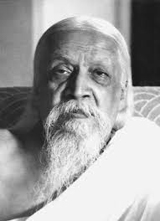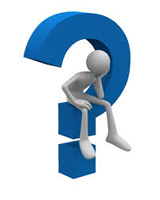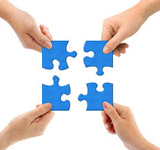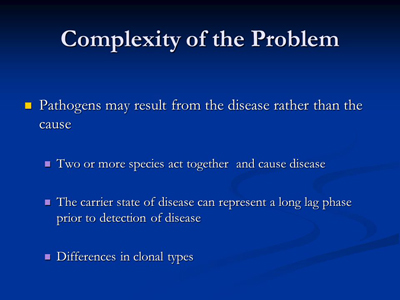Holistic medicine
Holistic healing and alternative therapies
Abstract
Modern medical science spends millions of dollars and many man-hours on research, whereas the therapist of alternative medicine merely applies some age-old wisdom and uses the skill that was acquired in a few months as an apprentice. In this scenario the author asks,
• Is there a flaw in the method of modern science?
• Can alternative therapy deliver the kind of results that modern medicine fails to deliver?
• Is the aim of medical science to serve ailing humanity, or is it to promote technology and business?
The author explains the trend of reductionism in analytical sciences. This trend has given rise to a basic flaw in the modern scientific approach and, as a result, modern science cannot provide any profound understanding of living systems. On the other hand, the author gives glimpses into the alternative therapies that are founded on the basis of traditional or holistic science.
The article
First we show the fundamental difference in the approach between traditional holistic sciences and modern analytical sciences. Next, we apply the holistic approach to the function of healing. Then, we provide insight into the working of some alternative therapies.
In the following issue of NAMAH, we shall discuss the applications of two holistic healing systems to illustrate our point of view.
Contents
1. Fundamentals of traditional sciences
a. The difference in working with wholes and working with parts
b. Qualitative and quantitative approaches
2. An Application to health and healing
a. The present scenario
b. The alternative approach
c. How does the notion of ‘healing’ differ from the notion of ‘cure’?
d. The issue of treating symptoms
e. The difference between the holistic and the specialised approaches in healing
f. What is holistic about healing?
1. Fundamentals of traditional sciences
a. The difference in working with wholes and working with parts
The traditional sciences looked upon the cosmos and human beings as living systems. Here the whole is always regarded as being greater than the sum of its parts.The parts are there, but they are ‘interconnected’,arranged in a ‘certain order’, and there is an ‘overall principle’ that functions through all of them. This overall principle ‘animates’ the whole and guides the parts, which makes the individual parts function in the whole. However, if you ignore this overall principle and consider the whole as merely the sum of its parts, you miss the connections and the overall intelligence.
The whole = ∑ parts + connections + something overall.
Sri Aurobindo (in an answer dated 29th January, 1937 to a question by Kishor Gandhi, the author of Social Philosophy of Sri Aurobindo) said, “A cell in the body if conscious might also think that the human being and its action are only the resultant of the relation and action of a number of cells like itself — not the action of a unified self (1).” When we think down-up, we miss the overall or unifying principle like the soul or the spirit. Now we attempt to show the dimension that is lost when you try to understand the functioning of the whole by reducing it to parts.
What happens when you cut a living person in two parts? You don’t get two persons, but only two parts of a dead person. This is precisely what happens when you try to understand a living whole (or non-mechanical systems) by dividing it into parts and then study the parts in detail. You cannot know the whole by studying all the parts in detail — for the spirit, among several other factors, would be the factor that is always missing. And without the spirit the whole does not function as a whole. It simply breaks down into a heap — like a stack of things.
The method of analytical science is to separate the parts from the whole; to then analyse each part in great detail; and then put this knowledge together to develop an understanding of the whole. While this method is useful for studying mechanical systems it is useless for studying living systems — since the interaction of the parts and the overall intelligence will always be missing.When something works as a whole, something new emerges in it. We can call them ‘emergent properties’ since they are properties of the whole and none of the parts has these properties. However, these properties arise only when the system is working as a whole. Thus, the ‘whole system properties’ cannot be known by dividing the system into pieces and then analysing the pieces. To have an idea of the emergent properties, consider the following examples: With two eyes we do not merely see more, but we see a third dimension. When we combine oxygen and hydrogen into a molecule of H2O, we don’t get another gas, but we get water, a substance with wetting qualities. A picture appears on the TV when it is tuned into a relay station. It is transmitted from the relay station, but appears on the TV when they are working as a whole. The same is true of music, culture, health, etc. These are properties of the whole that arise in the parts.
The important point to note is that when something ceases to work as a whole, it also loses its most characteristic part, the emergent property. On the other hand, to work with the emergent properties we don’t have to know how the individual parts work in detail. For example, to work on a computer, we don’t have to know how the semi-conductors work or how to programme the computer. We merely turn on the switch and click the menu that appears on the screen.
Thus, the analytical method of studying the parts in detail does not make any significant contribution to knowing the properties of the ‘whole’! To understand the properties of the whole, we have to work with the ‘whole’. And to do that, we have to use holistic methods or derive our applications from a principle that emerges in the whole and keeps the system functioning as a whole. The human systems like the body, the individual, the family, companies, markets, nations, etc. are all living wholes, and hence we can learn to work with them holistically.
Traditional scientists were aware of the limitations of the analytical method. Hence, they did not study the phenomena of nature in great detail as modern science does. Instead of trying to know the parts perfectly and in detail, they preferred to comprehend the whole imperfectly, but in essence. Further, they used the essential knowledge gained along the way to understand the significance of each and every part, and know its proper place in the greater whole. Thus, they gave to each thing just the importance it deserved and significance it should have. They did not make disproportionate or out of place arguments, which are made these days by the people who are captivated by modern science.
Modern science tries to make you believe that by accumulating a large amount of detailed knowledge you will arrive at a truer knowledge of the whole. But that cannot happen since there is already a reduction in the level of the search. The emergent properties that arise due to the link with a higher level are completely lost to the analytical approach. Hence, it is impossible to unify the multiplicity and diversity of the detailed knowledge that is generated by science. Thus, the knowledge generated by analytical sciences will remain fragmentary and of a relative kind, which compares well to a heap of unconnected parts!
Thus, these sciences, in the modern (reduced) form, have lost the depth and stability they could have had if they remained connected to a higher principle. They will grow, but without any real base to build on. They have to work on random probabilities and hypotheses, which can contribute to advancement of technology, but they cannot contribute to our understanding of wholes, like the living systems or the cosmos.
We are often asked, “Why have the experimental sciences had exceptional growth in recent times?” To reply we quote from the author’s book, Crisis of Modern Humanity:1
“This is because the development in question is accompanied by a change in values whereby modern people confine their attention wholly to things of the senses and the world of matter, having a strange fascination for things that bear the most immediate practical applications. In the preceding ages people would have been unable to find sufficient inducements for becoming so absorbed in this direction to the extent of neglecting the higher order of knowledge. The most characteristic feature of our times is the exploitation of all those things that earlier times had neglected, considering them as not worthy of human attention, but being among the possibilities to be manifested in this cycle, they had to be developed before the end (2).”
b. Qualitative and quantitative approaches
The pursuit of knowledge can be approached from two sides, from the subject side and the object side. Traditional science approaches it from the subject side of things. The knowledge got in this way will not change our experience of the facts. It only changes our understanding and appreciation of these facts — how we place them and what sense we make out of them.
In every kind of knowledge there is something conditional, which varies with the circumstances and situations, and there is something unconditional, which relates to its quality or essence. This unconditional dimension of knowledge is its truth content, and this dimension of knowledge can only be known intuitively, by linking the limited mind with a principle from the greater system.
Quality can exist by itself, but quantity on the other hand is always linked up with the conditions of the manifested world. Thus, God is said to have all the qualities, but no quantity is attributed to Him! For this reason, in traditional society, people sought knowledge and understanding of everything from the ‘essence-side’ and not from the ‘substance-side’ of things. They derived their cosmic principles from God or the ‘first cause’ and then related all things in manifested existence to it. In this way everything was placed in their natural hierarchic order. For example, the knowledge of physics was classified below the knowledge of metaphysics; the knowledge of astronomy was considered as lower than astrology; the knowledge of surgery was put below the knowledge of healing, etc.
The advent of modern science has changed all this. It works exclusively with the ordinary consciousness and in the realm of the relative and outer knowledge. Hence, it naturally rejects intrinsic worth, intuition, the higher consciousness, the soul and God. These are unknowable, unmeasurable and unprovable, and therefore illogical assumptions that must be disregarded!
However, by cutting themselves off from the higher realm and the intrinsic worth of things, the scientific investigation has also become irrelevant to any kind of deeper understanding! They merely give you explanations from the ‘object side’, but they can explain nothing from the ‘subject side’. For this reason, these modern sciences can only go on developing within the narrow domain of the ordinary consciousness. They can analyse the details, which are barren and as laborious, and which can be pursued endlessly without making any significant advancement towards any knowledge of a higher kind.
2. An application to health and healing
Let us apply this knowledge to the realm of health and healing:
a. The present scenario
Your health is always your concern and not your doctor’s concern. But today people are made to believe that their health depends on doctors and the medical care system! It has made people unnecessarily dependent on the medical profession. At the same time, the healthcare system has become very expensive, highly technical, very specialised, and unnecessarily complicated. It depends entirely upon intricate tests, expensive high-tech machines, and powerful drugs like antibiotics or surgical interventions. As a result you, the lay person, the receiver of healthcare, can hardly be expected to help yourself or your dear ones in health matters.
This problem is further compounded by newer discoveries that are made by researchers every day. They continuously put forward numerous hypotheses and theories, which may or may not be true, but which only confuse the public and tell them that the subject of health is beyond their comprehension or reach. This is how the modern healthcare system chooses to project itself to the people.
b. The alternative approach
In contrast to the modern approach, holistic therapies tell you that you can learn to maintain your health without depending on doctors, medicines and hospitals. And you can do it by simply learning to think holistically and by taking some simple self-help measures that will restore your vitality and keep you healthy.
The alternate healing systems consider toxaemia to be the primary cause of ailments in the body. It is a perceived ‘diseased state’ that arises when toxins accumulate in the body at the cellular level. Deeper causes of toxaemia usually arise from our lifestyle, diet and emotions. Hence, the treatment in alternative therapies is primarily directed at reducing toxaemia; and then further, they attempt then to remove the deeper causes that generate this toxaemia in the body. When the toxin level is reduced, the natural intelligence of the body (the higher or holistic consciousness) takes over and does the healing. In this approach great care is taken not to suppress the symptoms, since it obstructs the natural feedback mechanism that the vital force uses to perform the function of healing.
c. How does the notion of ‘healing’ differ from the notion of ‘cure’?
Modern medical science wants you to think of a disease in terms of infections and chemical deficiency. They consider a disease in the body to be an ‘outside-in’ process. That is, the disease is considered to be a result of invasion by outside agents like germs, bacteria, viruses or parasites; or that it arises due to a deficiency of some chemicals that have to be supplied from an external source. The term ‘curing’ is used when the treatment is made to rely on external processes to restore the health.
Natural or holistic healing systems, on the other hand, consider the primary cause of disease to arise from inside the person. Hence, the ailment in the body is regarded as a result of an ‘inside-out’ process. The inner causes make the person susceptible to external agents of disease and deficiency- related disorders. Both the external and inner causes exist, but more importance is given to the inner causes since they precede the external factors.
For this reason the holistic treatment mainly focuses on correcting the ‘internal causes’ of the imbalance. Once the internal causes are corrected, the vital force of the body will become active and do the healing. The term ‘healing’ is used when the treatment is given only to facilitate the process of natural healing in the body.
d. The issue of treating symptoms
From The Medicine Show (A Consumer Union of U.S. Publication):
“The public has grown accustomed to thinking of a doctor’s job as curing of diseases by finding and removing their causes. We tend to forget that, historically, the greater part of the physicians efforts have gone towards relieving symptoms with little knowledge of their causes, and that today’s most prevalent illnesses, many of them chronic illnesses, still must be treated symptomatically (3).”
The modern trend is to treat the symptoms of a disease with drugs. It is certainly useful in treating acute diseases — when the symptoms are severe or life-threatening. However, when you habitually treat ordinary ailments with drugs, the symptoms themselves get modified and develop as chronic disorders such as headaches, stuffed nose, acidity, wheezing, rheumatism, eczema, allergy, blood pressure, etc. These disorders are less intense in their effect, but they harass more since they last longer and recur periodically!
For such chronic disorders there are ‘no outright cures’ — there are only medications that can temporally relieve or suppress the symptoms. The patient is put on medication that has to be taken for the rest of his life! Thus, the patient is never healed. Treatment is only directed to controlling some irritating symptoms.
This trend has become set in modern times due to the commercial interests of the healthcare industry. Hence, hypertension is not healed; it is treated with BP pills that have to be taken for a lifetime. Asthma is not healed; inhalers are constant companions of the afflicted. Osteoarthritis is not healed; the ultimate remedy is sought in knee replacement. Allergies are not healed; the victim becomes increasingly dependent on medication. The list is endless.
Further, when the patient continues to use a medicine, the response to the medicine diminishes. However, that does not trouble the advocates of drug therapy. Instead, the pharmaceutical companies keep on rejuvenating their business by creating a demand for the newer drugs and procedures that are poured into the market every day. You may think that someday ‘scientific research’ will develop a lasting cure for your disease. However, that day is certainly not going to come. There will be newer cures, but they will not be lasting. To have a lasting cure, you have to look elsewhere.
Today people are deceived into believing that their disease is merely an effect on the physical body that can be removed by external means like drugs or surgery. This belief has distracted people from looking for the true cause of their disease and from searching for the remedy in the right places.
e. The difference between the holistic and the specialised approaches in healing
When symptoms are seen in the context of the whole person, they take on a totally different significance than when they are seen in the context of an ailing part of the body. When you think analytically, you simply reduce the level of the insight from the whole to the part. Then you only see the disorder in the parts, the symptoms, as the disease. As a result your treatment will be directed to suppress the symptoms or to surgically cut out the part.
However, when the underlying cause is elsewhere in the system (as in an eating habit), then you can miss it completely. This is precisely what happens when a health problem arises due to a disorder in the functioning of the whole person, as in psychosomatic disorders. The disorder simply shows itself as symptoms in the parts. In such a case, if the treatment aims at curing the part, then it will only provide some temporary relief. The underlying ‘disease factor’ will continue. Then the symptoms will continue to play hide and seek and you will have to go from one specialist to another to be cured again and again.
From the holistic point of view the solutions that emerge from a fragmented perspective themselves become problems for the whole! They aim to give some temporary relief, but in the process they create bigger and long-term problems for the person as a whole. Further, the ‘quick-fix’ cures always disturb the natural feedback that the body uses to heal itself. And that makes it more difficult for the vital force to do the healing.
f. What is holistic about healing?
In holistic healing you treat the patient in terms of a perceived imbalance in the body. This imbalance is not in a part, but in the functioning of the whole. The saying is:
‘You are not ill or diseased in a part. The symptoms of the disease are merely expressed in a part; or it is the ‘weakest link’ in the body that has broken down.’
When you think of the problems of health in this way, you treat the disease factor and do not seek to suppress the symptoms of the disease. In addition, you try to correct the errors in the lifestyle and habits that have given rise to the disease factor.
Most holistic therapies have a very simplistic diagnosis for the most complex health disorders. For example, Āyurveda talks in terms of Tridoṣa; Naturopathy talks in terms of Toxaemia; Water Cure talks in terms of Dehydration, Psychic Healing talks in terms of Prana deficiency, Homoeopathy talks in terms of Constitutional remedy, the Biochemic system talks in terms of a deficiency of inorganic salts in the body tissues, etc. However, the simplicity in their diagnosis should not be mistaken for a lack of sophistication or effectiveness. The remedies they provide are effective and the results they show are consistent.
However, if you are looking for a one-to-one correspondence between a disease and a remedy, you are unlikely to find it here. For example, the holistic systems cannot have a cure for baldness, asthma, diabetes, etc. These therapies do not work like that. They look upon the symptoms of a disease as merely the results of an imbalance in the body. Hence, their focus is on restoring the balance. Once the balance is restored, the natural intelligence of the body will take over and do the healing. Many symptoms will clear up; and if some symptoms still remain, they will respond to almost any kind of treatment. So, although holistic therapy cannot have a specific cure for a specific disease like asthma, it can always heal the patient who has asthma!
The modern super-specialised physicians talk of diseases in very complex terms. However, the ‘complexity’ around the disorder is something that is created by their system. It has arisen due to the way in which the modern medical science has chosen to evolve its solutions or cures. However, the complexity does not make them superior. Instead you will find greater benefit from looking at the problems of your health differently. If you examine the results provided by the alternative therapies you will find a greater consistency in the healing. In the next issue we shall discuss some of these alternative therapies in some detail.
References
1. Gandhi K. Social Philosophy of Sri Aurobindo. Pondicherry: Sri Aurobindo Society; 1965, p. 23.
2. Shah PS. The Crisis of Modern Humanity. Self-published; 1975, p. 19.
3. The Medicine Show. Mount Vernon, NY: A Consumer Union of U.S., Inc. Publication; 1963, p. 213.
1 You can read about the book at the author’s website, http://spiritual-living.in
Prashant S. Shah is an author, healer, spiritual guide and counsellor from Vadodara, India.
Share with us (Comments,contributions,opinions)
When reproducing this feature, please credit NAMAH,and give the byline. Please send us cuttings.












